rhl-oregon
Cameras Guitars Wonders
Since June of last year I have been working on a project concerned with Juneteenth in the North Carolina Sandhills, where I have been living for two years, and where many maternal ancestors are buried.
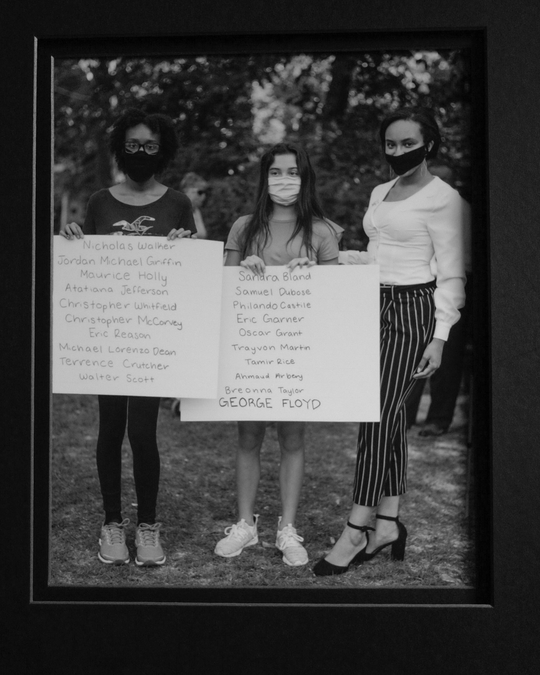
The project was funded by NCArts in December 2020. Since then I have made hundreds of images of people at work, at worship, at play, at community events and in conversation over an area comprising 5 counties and a number of small towns.
Yesterday, June 15 2021, I submitted the grant report to the local arts council through which I received NCArts funding. A few hours later, National Public Radio reported that the US Senate unanimously passed a bill to make Juneteenth a federal holiday.
So I make this post in wonder and joy, with hope for healing and reconciliation in the Juneteenth holidays to come.
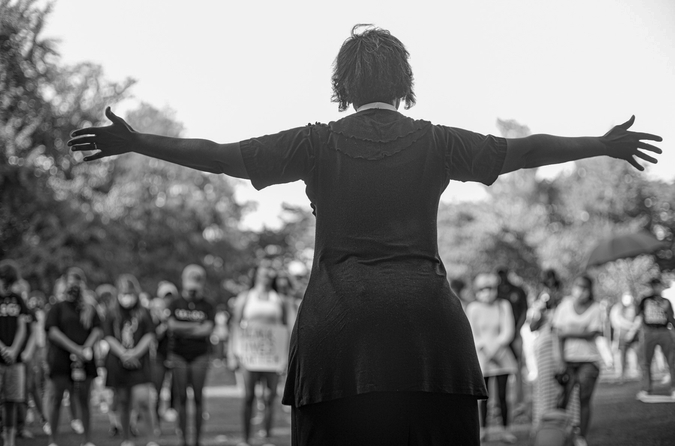
The project started in response to the deaths of Ahmaud Arbery, George Floyd, Breonna Taylor, in a time of mourning, outcry, national controversy. I felt this keenly, and resolved to bear witness.
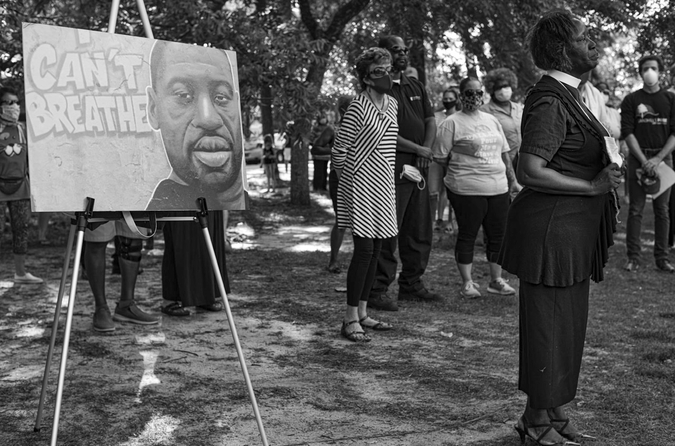
I was having my own lenses replaced at that time—I had my first cataract surgery the day before a George Floyd Memorial, and photographed his funeral/visitation in Raeford NC, where he spent boyhood, with one new eye and one old eye.

After making the following image of a line of mourners being admitted one by one to visit Mr. Floyd’s body, I handed over my RX1 and GR to this usher and walked in. That image, made with my new 20/20 left eye, is committed to the darkroom of memory for as long as I live.
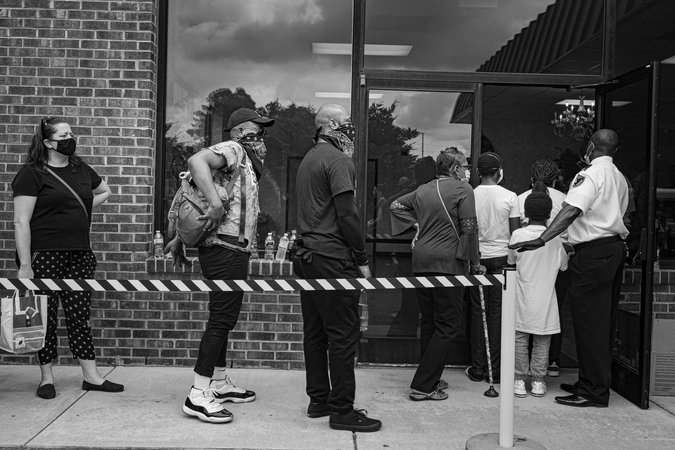
As I kept working on the project, consulting and portraying ministers, entrepreneurs, civic leaders, teachers, and more in little towns stretching 60 miles along US1, I worked to make arc of the documentary images more affirmative than conflictive, more celebratory than denunciatory, more communal than an ongoing pursuit of tribunal. Juneteenth, after all, is a day of liberation and jubilee.
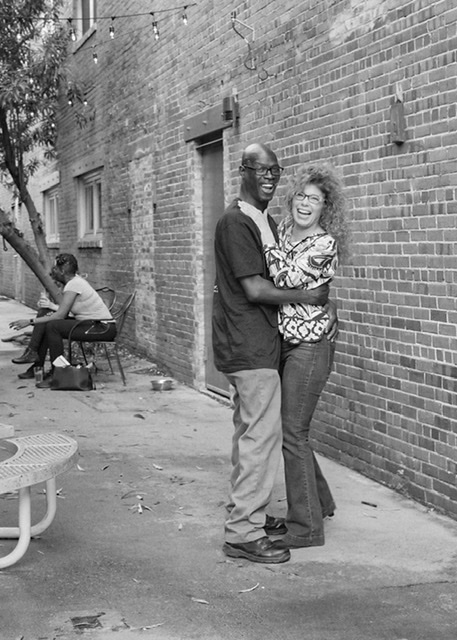
I am just an aging white man whose ancestors include slaveholders and abolitionists, accomplices and reconcilers. My great grandfather Long was the first judge in this state to preside over the conviction of a white man in a lynching; his older brother was in charge of a Klan camp in the town of their birth, and party to an infamous lynching there. I grew up with a portrait of the Black South Carolina evangelist Will Stinson over the dining table, painted with a halo by my evangelist grandfather McKendree Robbins Long. His son my father occasionally used the polite epithet “nigra” in disapproval at the same table, and it was a needle in my heart.
I am, in other words, a minuscule part of the immense historical American problem, seeking to cast his little light on its solution. Nearly everyone I met and photographed, I asked, ‘Imagine if the US celebrated the liberation of those it historically victimized! Wouldn’t it make all of us understand the joys and responsibilities of liberation better?’
I’ll be running the project’s slideshow at the Juneteenth Festival of Healing and Reconciliation this Saturday at Cardinal Park, a historically Black recreation area in Pine Bluff NC. Some of the images are part of my BLM exhibit in the Pittsboro Gallery of Arts, where I am a member. Others are being exhibited in Art Against Racism (.com) and at the Edward Dixon Gallery in Dayton, Ohio.
For once, I feel I have contributed at the right time with my whole heart to a historical moment.
Here are a few more images from the project. I will update this post when the accompanying webpage is ready.
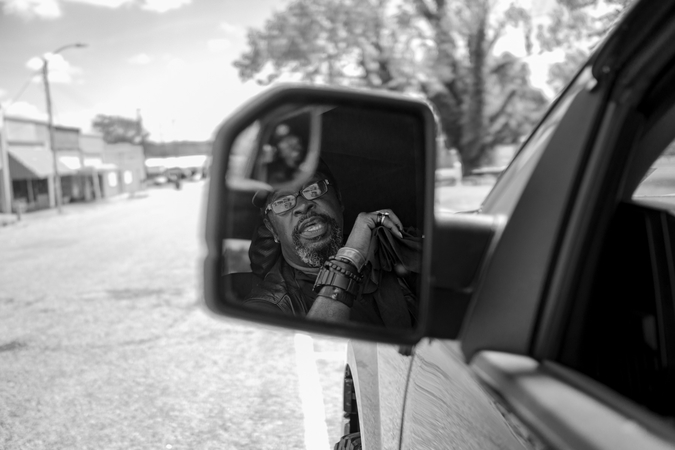
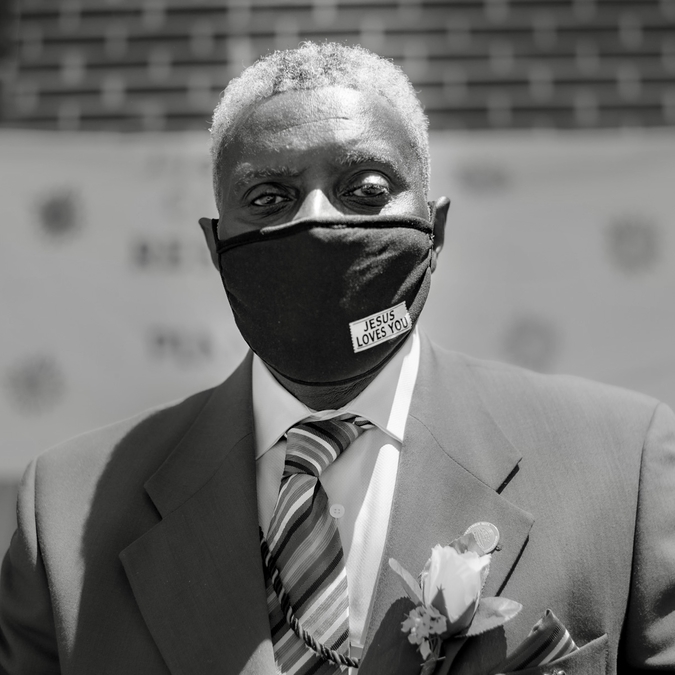
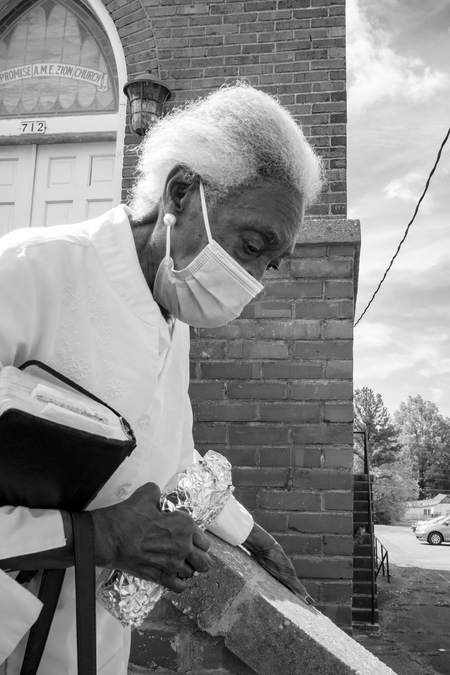
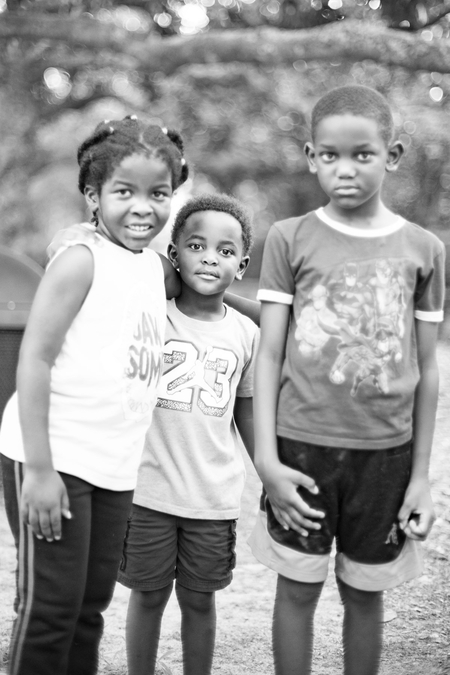
Equipment used:
Leica M10 Monochrome, 50 1.4 Summilux, 50 2.8 Elmar, 90 4.0 Elmar, ZM 35 2.0, ZM 21 2.8, CV 50 1.1
Sony A7II Kolari, FE 55 1.8, 85 1.8
RX1, GR, GRIII
(a few from my old M5 and Fuji GF 670)

The project was funded by NCArts in December 2020. Since then I have made hundreds of images of people at work, at worship, at play, at community events and in conversation over an area comprising 5 counties and a number of small towns.
Yesterday, June 15 2021, I submitted the grant report to the local arts council through which I received NCArts funding. A few hours later, National Public Radio reported that the US Senate unanimously passed a bill to make Juneteenth a federal holiday.
So I make this post in wonder and joy, with hope for healing and reconciliation in the Juneteenth holidays to come.

The project started in response to the deaths of Ahmaud Arbery, George Floyd, Breonna Taylor, in a time of mourning, outcry, national controversy. I felt this keenly, and resolved to bear witness.

I was having my own lenses replaced at that time—I had my first cataract surgery the day before a George Floyd Memorial, and photographed his funeral/visitation in Raeford NC, where he spent boyhood, with one new eye and one old eye.

After making the following image of a line of mourners being admitted one by one to visit Mr. Floyd’s body, I handed over my RX1 and GR to this usher and walked in. That image, made with my new 20/20 left eye, is committed to the darkroom of memory for as long as I live.

As I kept working on the project, consulting and portraying ministers, entrepreneurs, civic leaders, teachers, and more in little towns stretching 60 miles along US1, I worked to make arc of the documentary images more affirmative than conflictive, more celebratory than denunciatory, more communal than an ongoing pursuit of tribunal. Juneteenth, after all, is a day of liberation and jubilee.

I am just an aging white man whose ancestors include slaveholders and abolitionists, accomplices and reconcilers. My great grandfather Long was the first judge in this state to preside over the conviction of a white man in a lynching; his older brother was in charge of a Klan camp in the town of their birth, and party to an infamous lynching there. I grew up with a portrait of the Black South Carolina evangelist Will Stinson over the dining table, painted with a halo by my evangelist grandfather McKendree Robbins Long. His son my father occasionally used the polite epithet “nigra” in disapproval at the same table, and it was a needle in my heart.
I am, in other words, a minuscule part of the immense historical American problem, seeking to cast his little light on its solution. Nearly everyone I met and photographed, I asked, ‘Imagine if the US celebrated the liberation of those it historically victimized! Wouldn’t it make all of us understand the joys and responsibilities of liberation better?’
I’ll be running the project’s slideshow at the Juneteenth Festival of Healing and Reconciliation this Saturday at Cardinal Park, a historically Black recreation area in Pine Bluff NC. Some of the images are part of my BLM exhibit in the Pittsboro Gallery of Arts, where I am a member. Others are being exhibited in Art Against Racism (.com) and at the Edward Dixon Gallery in Dayton, Ohio.
For once, I feel I have contributed at the right time with my whole heart to a historical moment.
Here are a few more images from the project. I will update this post when the accompanying webpage is ready.




Equipment used:
Leica M10 Monochrome, 50 1.4 Summilux, 50 2.8 Elmar, 90 4.0 Elmar, ZM 35 2.0, ZM 21 2.8, CV 50 1.1
Sony A7II Kolari, FE 55 1.8, 85 1.8
RX1, GR, GRIII
(a few from my old M5 and Fuji GF 670)
bluesun267
Well-known
Congratulations; these are lovely images and I appreciate your personal candor in this complicated history
rhl-oregon
Cameras Guitars Wonders
Thank you—the images are more pertinent than my own story, but having been part of RFF for 10 years, I felt that I owed some backstory to friends and colleagues here.
Timmyjoe
Veteran
Wow Robert, really nice work. Congratulations on the NCArts grant and thanks for sharing this with us. Well done.
Best,
-Tim
Best,
-Tim
Retro-Grouch
Veteran
Beautiful work, Robert, and very important work. If America is ever going to heal, it will be because individuals such as you are willing to do the painful work of examining our past, individually and collectively. Thank you!
rhl-oregon
Cameras Guitars Wonders
Thank you R-G (and welcome), and thanks TJ.
Greg Maslak
Well-known
The image and the metaphor of seeing with one old eye and one new eye is superb, as is the entire project. Well done. Thank you, Robert for sharing.
Phil_F_NM
Camera hacker
This is outstanding, Robert. So important.
After that I'm really without words.
Phil Forrest
After that I'm really without words.
Phil Forrest
Rick Waldroup
Well-known
Thank you for the warm and incredibly moving images. As a young child being raised by a mixed marriage couple during the early 1960's, these photos speak to me and touched me in a way that brought back memories, both good and bad, but mostly good. It took courage and strength for my mother and step-father to endure what they had to go through. But through it all- grace, compassion, and especially love is what I remember from those days. Juneteenth has been a state holiday here in Texas for almost 50 years. Thanks, once again.
Bingley
Veteran
Thank you, Robert, for these moving images and commentary!
rhl-oregon
Cameras Guitars Wonders
Greg, Phil, Rick: thank you. This project challenged me in many ways, but making myself get out and seek people always led to redoubtable characters, fascinating stories, and again and again welcoming and respect simply for showing up at churches, businesses, events where I was often the only nonBlack person. I was clear about being there to listen and learn and to make photographs that would serve the community. Many days that began with old fears and anxieties about what might go wrong ended with satisfaction at simply showing up and making a few good images, and an inner glow that saw me home.
In a short time it became clear that the clergy I met, AME Zion and Pentecostal, recognized that I, too, had a ministry. A ministry of photography, to show the wider (and whiter) world details of these lives that the whiter wider world might not otherwise see. In this way I became Brother Robert. The spiritual consequences of worshipping with people I was photographing have included an unexpected reconversion, and a tremendous upsurge of love and lovingkindness. Although I don’t know where it will ultimately lead, I understand it is grounded in the grace, compassion, and friendship I have been given, and that I must give forward from now on.
In a short time it became clear that the clergy I met, AME Zion and Pentecostal, recognized that I, too, had a ministry. A ministry of photography, to show the wider (and whiter) world details of these lives that the whiter wider world might not otherwise see. In this way I became Brother Robert. The spiritual consequences of worshipping with people I was photographing have included an unexpected reconversion, and a tremendous upsurge of love and lovingkindness. Although I don’t know where it will ultimately lead, I understand it is grounded in the grace, compassion, and friendship I have been given, and that I must give forward from now on.
agentlossing
Well-known
Thank you for the warm and incredibly moving images. As a young child being raised by a mixed marriage couple during the early 1960's, these photos speak to me and touched me in a way that brought back memories, both good and bad, but mostly good. It took courage and strength for my mother and step-father to endure what they had to go through. But through it all- grace, compassion, and especially love is what I remember from those days. Juneteenth has been a state holiday here in Texas for almost 50 years. Thanks, once again.
I'll be very happy if it becomes a national holiday - the event behind it is wholesome and hopeful, exactly the kind of thing that America should celebrate, whatever our race.
robert blu
quiet photographer
These are good photos "Brother Robert". For sure an interesting project, worthwhile a book in future. When I first saw the pictures in the gallery it was clear they were good portraits, where you had a good connection with the subject.
But living far away it was not very clear to me what exactly this "Juneteenth" was about, (sorry) even if I had an idea from the pictures. Now I have better understood and for sure it is a good opportunity to work for a better America, and a better world. And I believe your documentary work will help the process.
Thanks for the posted photos and the comments about it and your family history. Both let me think...
But living far away it was not very clear to me what exactly this "Juneteenth" was about, (sorry) even if I had an idea from the pictures. Now I have better understood and for sure it is a good opportunity to work for a better America, and a better world. And I believe your documentary work will help the process.
Thanks for the posted photos and the comments about it and your family history. Both let me think...
rhl-oregon
Cameras Guitars Wonders
Thanks, Steve, Agent L, Robert.
Tomorrow I’ll run the slide show of 380 images every hour at the regional Juneteenth festival. In between, photographing participants and saying farewell. We move 100 miles north to the city of Winston-Salem on 6/23.
Tomorrow I’ll run the slide show of 380 images every hour at the regional Juneteenth festival. In between, photographing participants and saying farewell. We move 100 miles north to the city of Winston-Salem on 6/23.
airfrogusmc
Veteran
Wonderful and important work Robert. Thanks for sharing.
Miles.
Beamsplitter
Thank you for your work and candor, Robert.
Mlehrman
Mlehrman
Robert, your work is so moving, I just shared with my wife. Thank you.
das
Well-known
Beautiful words and images. Thank you for sharing all of it.
lynnb
Veteran
A moving and worthwhile project Robert - thanks for sharing with us.
Mark A. Fisher
Well-known
What a lovely, powerful body of work. I congratulate you for your commitment to a story too long untold.
Share:
-
This site uses cookies to help personalise content, tailor your experience and to keep you logged in if you register.
By continuing to use this site, you are consenting to our use of cookies.
